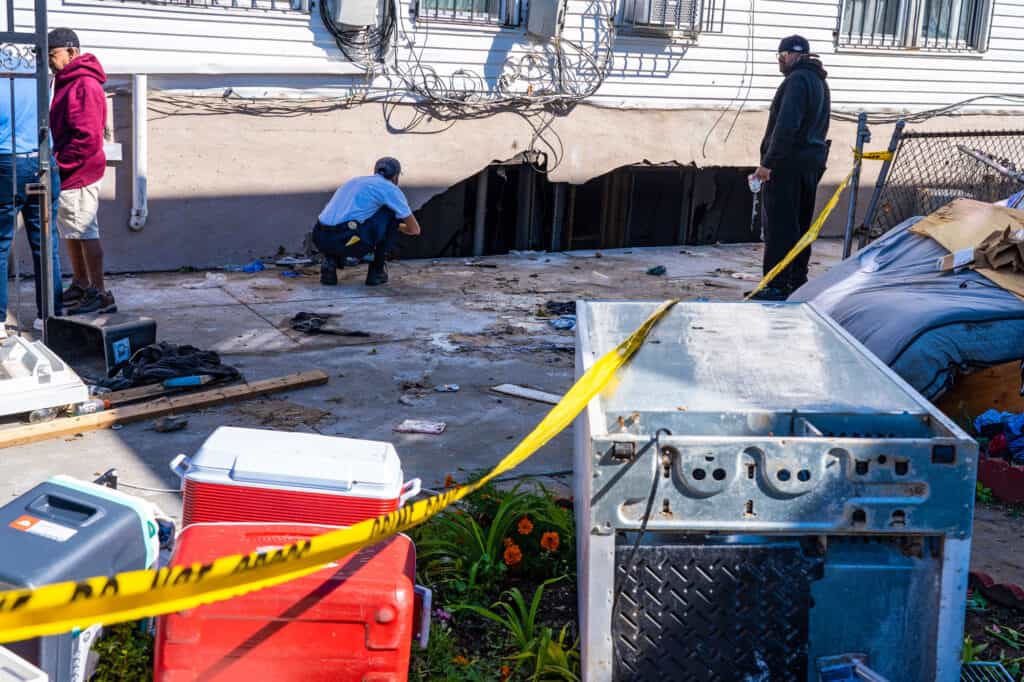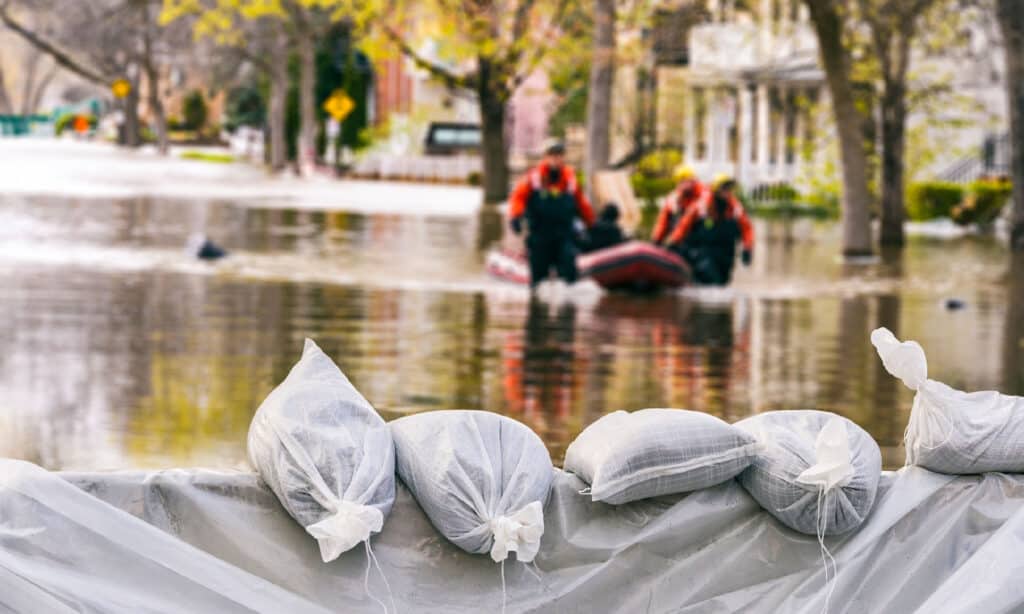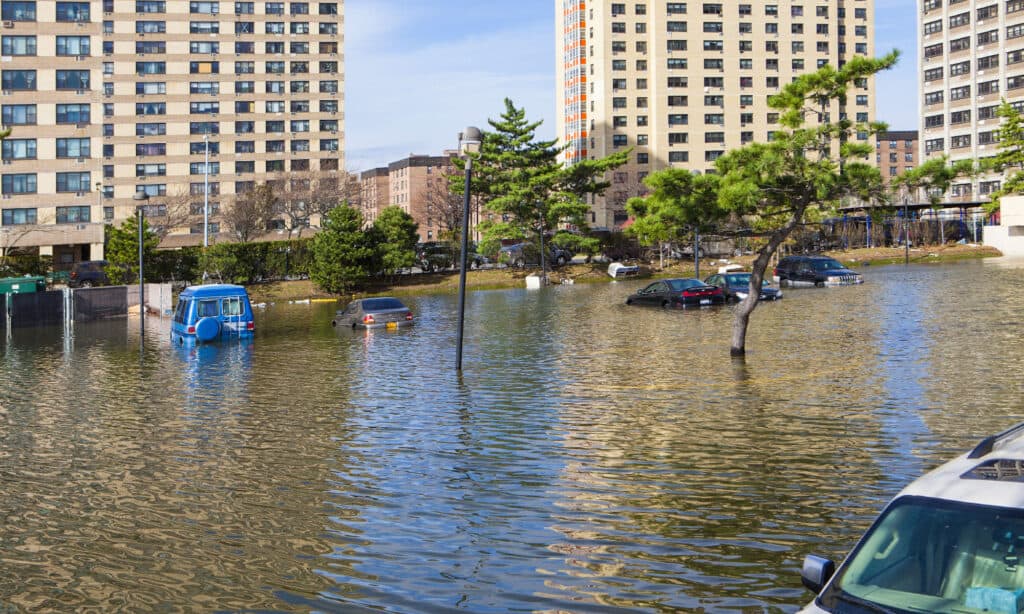New York, NY is not where you go to experience the wonders of nature. Sure, you can head to Central Park to see some urban wildlife for a few hours or take a trip to the Bronx Zoo to connect with the natural world. However, “the city” as it is called by locals may not be what you’d associate with natural disasters like flash floods.
Keep in mind, even the most urban and developed places are subject to the forces of Mother Nature — she does not discriminate!
Even New York City has experienced extreme flooding, with some of the most extreme flash flooding events having taken place within the past few years. Urban areas are particularly ill-suited to deal with flash flooding. Drainage systems can get easily clogged and contribute more to flooding. There are fewer natural waterways for the flood waters to recede into. Perhaps the most dangerous aspect is that they are so densely populated, so there is a greater risk of loss of life.
Let’s dive in (no pun intended) to the worst flash floods in NYC history.
Hurricane Ida’s Remnants

Ron Adar/Shutterstock.com
In September 2021, Hurricane Ida swept the nation. It started by hitting Cuba as a low-level hurricane on August 27th of that year.
Then, after intensifying over the Gulf of Mexico, it hit Louisiana on the 16th anniversary of Hurricane Katrina, August 29th, destroying the small town of Grand Isle and hitting several other places hard. On August 30th, the storm had officially been downgraded to a post-tropical cyclone, but the damage was not over yet. Over 1 million people in Louisiana had lost power and many areas experienced devastating floods.
How does a hurricane in Louisiana affect NYC? Well, the remnants of the storm traveled up the coast leading to severe, sudden, and unexpected rainfall all along the eastern seaboard. There were tornadoes, and it was officially New York City’s first-ever official Flash Flood Emergency Warning. In the New York Metropolitan Area, over 40 people died from the flooding across four states: New York, Connecticut, New Jersey, and Pennsylvania.
On those days, September 1st and 2nd of 2021, over 6 inches of rain fell in a few hours, drenching the region and overwhelming underground transportation and drainage systems. Many of the people who died were living in basements or “garden level” apartments and could not get out in time to avoid flooding. Sadly, in some cases, neighbors tried to help but were unable to reach people due to rushing water.
A resident of one such apartment who made it out in the knick of time reported waking up suddenly around 10 pm to ankle-deep water that became chest-deep in mere minutes. In some cases, the rushing water was so fast and strong that it broke windows and ripped doors off their hinges. Several other people died in cars.
In the Northeast alone, this storm caused up to $24 billion in damages. Over the whole Northeast region, thousands of boat rescues took place. During the storm, the city issued a travel ban. Trains stopped in their tracks, leaving commuters completely stranded in trains with no water, food, ventilation, or restrooms until rescue crews could get people out, in some cases up to 14 hours later. On some tracks, outside the trains, water levels rose up to the train windows. However, inside, everyone stayed dry.
Others were stranded in stations themselves. With no trains running, roads potentially dangerous, and no yellow cabs available, many had no choice but to wait it out or get an expensive and potentially perilous rideshare home. Luckily, everyone who was stuck in transit survived the storm.
July 2022 NYC Flash Flood: Clogged Drains and a Sinkhole

iStock.com/Marc Bruxelle
In July of 2022, the forces of rain once again worked against the urban environment in NYC. During heavy rain, a drain in Inwood became clogged, causing water to rush into the Dyckman Street Station, affecting the 1 line. Social media footage from throughout the day showed other stations with water rushing in from above, and straphangers muddling through ankle-deep water to exit some stations.
However, perhaps most concerning from that day is that a 58-foot-long sinkhole emerged in the Bronx. The sinkhole swallowed a van and damaged a water main affecting 75 households. Luckily, no one was injured by the sinkhole or floods that day.
Hurricane Sandy

MISHELLA/Shutterstock.com
While this is a hurricane, it definitely had flash floods, and it is one of the worst flood events in NYC. Even though it happened in October 2012, by 2020, the city was still dealing with the aftereffects of Hurricane Sandy.
According to one meteorologist, the storm was a literal worst-case scenario for the city that never sleeps. It happened during a full moon and higher tide than usual, leading to the highest storm surge in the area of 13 feet. New York Harbor had one wave that was 32 feet high.
All of New York city is surrounded by water, making it uniquely vulnerable to storm surges. A flood at a power station in the Lower East Side killed power for all of Manhattan below 34th street. For those familiar with the city, that is a huge portion.
In oceanside communities like Canarsie and Rockaway, cars floated down the street and flood waters reached the second level of some homes. So much power was out that cell service was disrupted for many in the city. They had no power, running water, or cell service. More than 40 people died in New York City alone from the storm.
However, it wasn’t only flooding that did the damage. Sea water infiltrated electrical panels in homes, setting them on fire. Over 100 homes burned down despite the heavy rains. The sheer force of the wind blew down the front of an apartment building, along with plenty of trees and telephone poles. The transportation system is still suffering from damage, with repair work and upgrades that need to be completed. Many underground transportation tunnels were filled with seawater during the storm.
The hardest hit areas of the city were Lower Manhattan and Staten Island. The storm surge on Staten Island killed over 20 people. Entire blocks were completely washed away in some neighborhoods. In Lower Manhattan, the South Ferry/Whitehall subway station was destroyed as it was flooded with up to 80 feet of seawater. The station had just been redone and finished four years earlier to accommodate system changes related to the 9/11 terrorist attacks. The station did not reopen again until 2017.
Is Flooding in NYC Getting Worse?
Experts agree that extreme flooding events in New York City are becoming more frequent. While the city works to upgrade infrastructure to protect people against flooding, it’s important to follow recommendations from city notifications and meteorologists. Take weather warnings seriously, be prepared for a natural disaster, and learn how to stay safe in a flood, even if you live in an urban area like NYC.
Some experts believe these worsening storms are due to climate change. Climate change is real; the climate is getting warmer, which immediately results in stronger storms that deliver more rain, resulting in strong flooding events like the ones listed here.
Wherever you are, be sure to stay safe and prepared!
Up Next
- Watch An Enormous Flash Flood Form in an Instant, Carrying Thousands of Trees
- Why Do Plagues of Snakes and Spiders Follow Floods?
- The 8 Most Destructive Mudslides in the United States
- This Video Perfectly Shows the Speed, Power, and Danger of Flash Floods
The post The 3 Worst Flash Floods in New York City’s History appeared first on AZ Animals.
from Animal News, Facts, Rankings, and More! - AZ Animals https://ift.tt/iYFJ6ST